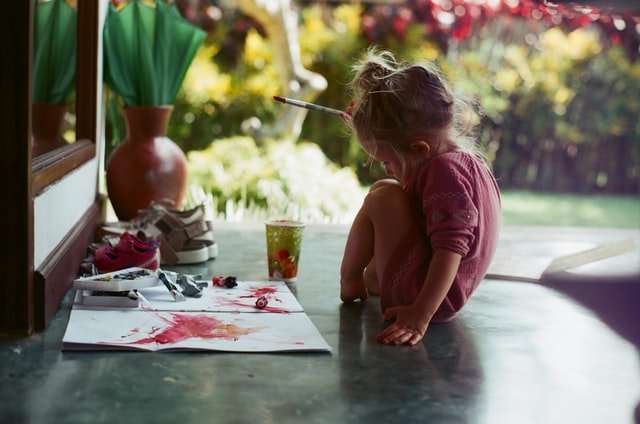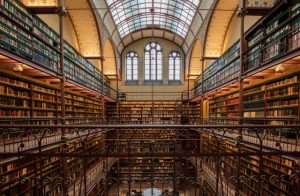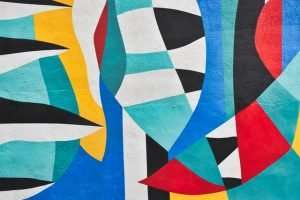Rococo art is a style of art that originated in the 18th century. Rococo art was also referred to as “Late Baroque.”
Rococo is characterized by a lightness of tone and touch. The style was very ornate and elaborate. It is a form of art that was very popular in France. Rococo artists were known for their skillful use of color and for the asymmetry of their compositions.
TIP: A good way to understand Rococo style is to compare it with the Baroque style, which preceded it. You can learn more about Rococo and Baroque on my related blog post, What is Baroque Art?
Rococo art refers to the period between 1725-1750, although its influence can still be seen today. The word ‘rococo’ comes from the name of a French word “rocaille”, meaning shellwork, which also refers to the ornate decorations associated with this period. The term ‘Baroque’ refers to an earlier period in European history (around 1600s) when architecture and other forms of fine arts were extremely elaborate and ornate in nature.
Rococo art came into existence during the reign of Louis XV in France during the
Rococo art is one of the most famous art styles in history. It originated in the 18th century. A lot of people have heard of it, but not everyone knows what it is exactly. Rococo art is also called “Late Baroque”. This was an art period that started when Louis XIV died and ended in the 1760s.
The style developed in France with its architecture, fashion, and painting. It spread across Europe with great speed. It’s popularity lasted for about sixty years. The word Rococo comes from the French word “rocaille”, which means shell-like ornamentation.
Rococo art is characterized by asymmetrical patterns, light colors, and a feminine look to all things including architecture, furniture, and clothing design.
This art style was a reaction to the excesses of the Baroque era, a time where everything had to be perfectly symmetrical and there were only three acceptable subjects to paint: religion, mythology, or history.*
Rococo is a style of art that emerged in France and spread to most of Europe during the 18th century. It was a reaction to the Baroque period, which came before it. Rococo Art was softer and more delicate than the Baroque styles. Famous examples of Rococo art include paintings by Boucher, Watteau, Fragonard, and Greuze; sculptures by Falconet and Pigalle; and decorative arts like Sèvres porcelain.
Rococo art is characterized by overabundance. There are many figures in a painting, or many objects in a room or many curves on one piece of furniture. It is also characterized by asymmetry and fragility. The characters in Rococo art are often portrayed as carefree, with stylized hair and costumes. The expressions on their faces lack seriousness; they are often smiling or frowning slightly.
The name “Rococo” comes from the French word for shell-like, which describes some of the ornate decoration found in this style of art. For example, furniture might have curved lines or shells carved into them. Artists would decorate frames with shells carved from wood or plaster, or they would use objects like seashells or pieces of
Rococo is an ornamental art style, which emerged in France during the reign of king Louis XV. This period began in 1715, when the king took the throne, and ended in 1774, when he passed away.
The word RoCoco comes from French “rocaille”, which means “small stones”, and it was used to describe an ornamental style of architecture that became common at that time. The word was first used to describe this art style in 1804
Rococo art is characterized by asymmetry, lightness and elegance, with a tendency towards curvilinear lines and scrolled foliage. Its main purpose was to ornament every surface it could find. It is also known for its playful nature and its abundant use of gold leaf.
It is hard to point out a single artist who epitomized Rococo, because there were many artists who worked within this style, although most of them worked in France. Additionally, they were influenced by diverse styles like Baroque or Ancient Greek Art.
Rococo art (also known as “French rococo”) is art created during the “age of elegance”, a time of exuberance, lightness and grace in art. Rococo was an attempt to create a more lighter, playful form of art that was less focused on formal rules and order than the Baroque style.
This new style became prominent in Europe, particularly France, during the reigns of Louis XV (1715-1774) and Louis XVI (1774-1792).
Rococo embraced asymmetry, low relief, curves, bright colors and gold. It replaced the strict lines and high relief of the baroque style with delicate arches and scrolls.
The word “rococo” means “over the top”. Much of French rococo was inspired by the extremely ornate decorative arts and architecture from Parisian palaces such as Versailles.
Rococo art is known for its bright colors, lightness, and airy quality. This style was dominant in Europe from the 1720s through the 1760s. It was mostly used in interior design rather than painting. The rococo style replaced the more ornate and heavy baroque style that preceded it.
Rococo art is most often seen as an extension of baroque art. This new style grew out of baroque art sometime during the mid-1700s (this exact date has been debated by historians). For most of its history, rococo art was not considered a legitimate form of artistic expression. Instead, it was thought to be decorative and fun but without much substance. Even today, some people view this art as frivolous and over-the-top.
The name rococo comes from the French word “rocaille,” which means shell-like or rocky formation. Rococo artists were inspired by nature, especially flowers and shells, because they were exotic and beautiful while still being natural looking (i.e., they did not have much decoration).
Rococo art places importance on lightness and movement over deep meaning or sophistication. Artists wanted their work to look effortless and elegant rather than
The Rococo style was popular in France and Germany from the 1730s to the 1760s and is known for its lavish ornamentation. It was a counterpoint to the simplicity of earlier Neoclassical works, especially against the strict rules of geometry set by architects like Louis XIV, the “Sun King” who ruled France for 54 years until his death in 1715. Rococo designers were known for their use of curves, asymmetrical compositions and bright colors.
This period’s style began as a reaction to the complexity of Baroque art and architecture as well as Rococo’s predecessor, the Baroque. By using lighter backgrounds and more pastel colors, Rococo artists made their work seem more delicate than Baroque art. They employed asymmetrical designs whose composition emphasized movement. Most importantly, they replaced hard edges with curves and created organic shapes that seemed to blend into each other. This gave their compositions an ethereal quality that contrasted with rigid lines of previous art periods.
Despite these changes, Rococo artists maintained some Baroque traditions. For example, they often used classical myths or historical references in their paintings. And like most 18th century painters, they used chiaroscuro—where contrasting light and dark create depth—to



